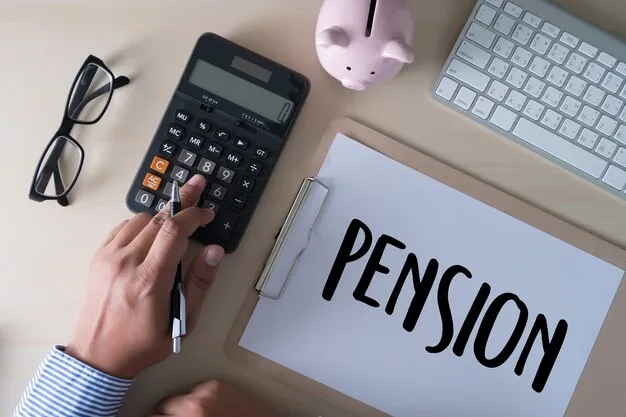Call us today!
Call us today!

Your Health & Wealth
Bodyguard
Our Latest Insights: Blog & Resources

The Future of Teacher Pensions: Trends and Predictions
Introduction
The landscape of teacher pension plans is evolving, and educators must stay informed about emerging trends and policy changes that could impact their financial future. Pension structures are shifting, and teachers who understand these trends will be better prepared to secure their retirement.
With increasing concerns over pension funding, legislative reforms, and the move toward defined contribution plans, teachers must explore alternative savings strategies and engage in advocacy to protect their benefits.
This guide examines key trends in teacher pensions, potential changes in the system, and strategies educators can use to stay financially secure.
Key Trends in Teacher Pensions
1. The Shift from Defined Benefit to Defined Contribution Plans
Traditionally, most teachers have relied on defined benefit (DB) pension plans, which guarantee a set monthly income in retirement. However, many states are shifting toward defined contribution (DC) plans, which work similarly to 401(k) plans.
Defined Benefit Plans (Traditional Pensions):
Provides a guaranteed lifetime payout based on years of service and salary.
Employer-managed, meaning teachers do not control investment decisions.
Funding issues have led some states to reduce benefits or increase contribution requirements.
Defined Contribution Plans (403(b) or 457 Plans):
Teachers and employers contribute a set percentage of salary.
Teachers manage their own investments, meaning retirement income is not guaranteed.
Market fluctuations affect final retirement savings.
📌 Key Takeaway: The move toward DC plans means teachers must take a more active role in retirement planning rather than relying solely on pensions.
2. Potential Policy Changes Affecting Future Pensioners
Many states are considering reforms to teacher pension plans due to funding challenges and changing economic conditions. Possible changes include:
Increased Retirement Age: Some states are raising the minimum retirement age to reduce long-term pension liabilities.
Higher Employee Contributions: Teachers may be required to contribute more from their salaries to fund their pensions.
Reduced or Eliminated COLA Adjustments: Cost-of-living adjustments (COLA) help pensions keep up with inflation, but some states are cutting or freezing COLA increases.
Hybrid Pension Plans: Some states are introducing hybrid models combining elements of DB and DC plans.
📌 Key Takeaway: Teachers should stay informed about state pension legislation and explore additional savings strategies to compensate for potential reductions.
How Teachers Can Prepare for Pension Changes
1. Alternative Retirement Savings Strategies
With pension changes on the horizon, teachers should diversify their retirement savings to ensure financial security. Options include:
403(b) Plans: Tax-advantaged retirement accounts similar to 401(k)s, available to public-sector employees.
457(b) Plans: Another tax-deferred option, often used by teachers planning early retirement.
Roth IRAs: Provides tax-free withdrawals in retirement, offering a hedge against pension taxation.
Health Savings Accounts (HSAs): Helps cover medical expenses in retirement while offering tax benefits.
Real Estate and Passive Income Investments: Alternative income sources to supplement pension income.
📌 Key Takeaway: Diversification ensures teachers have multiple income streams in retirement, reducing dependence on pensions alone.
2. Advocacy and Staying Engaged in Pension Reform Discussions
Educators should take an active role in shaping pension policies by:
Joining teacher unions and professional organizations that advocate for pension protections.
Staying informed on legislative changes that could impact pension structures.
Engaging in policy discussions and voting for representatives who prioritize educator benefits.
Encouraging financial education within school districts to help teachers plan for the future.
📌 Key Takeaway: Teachers can help protect and improve pension benefits by staying engaged and advocating for fair policies.
Final Thoughts
Why Staying Informed Ensures Financial Security
As teacher pension plans evolve, staying informed and proactive is essential for financial stability. Educators who diversify their savings, monitor policy changes, and engage in pension advocacy will be better prepared for a secure retirement.
Encouragement to Take a Proactive Approach to Retirement Planning
✅ Review your pension plan and understand how future changes may impact you.
✅ Start contributing to supplemental retirement accounts (403(b), 457, or Roth IRA).
✅ Engage in pension reform discussions to protect educator benefits.
✅ Consult with a financial professional to develop a long-term retirement strategy.
📌 The future of teacher pensions is changing—take control of your financial future today!


